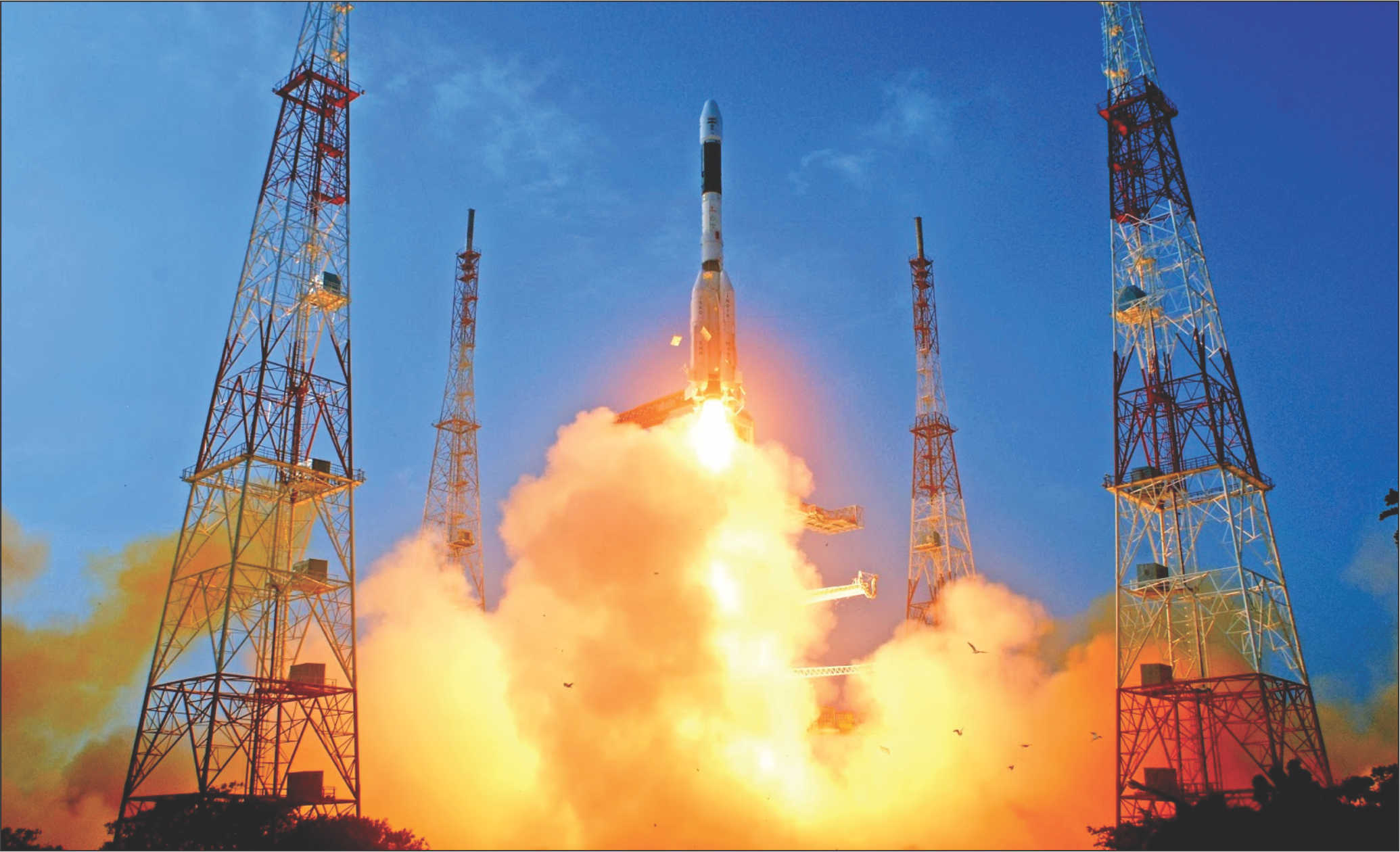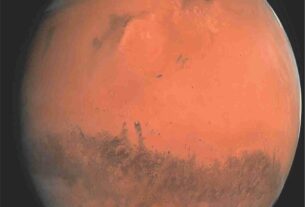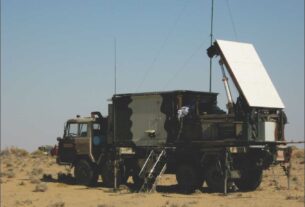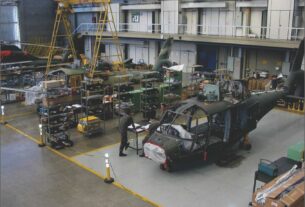In a major boost to the Indian space programme, the four stage reliable space work horse PSLV (Polar Satellite Launch Vehicle), powered by alternate liquid and solid fuel stages, launched as many as five satellites of international customers at one go in less than twenty minutes of its spectacular take off from the Satish Dhawan Space Centre (SDSC), the Indian space port on Sriharikota island, located at a distance of about 80-kms from Chennai.
This dedicated commercial mission of PSLV designated PSLV-C23 placed 714-kg French earth observation satellite Spot-7 into its intended orbit as a primary payload. The four other satellites that were launched as piggyback payloads were: 14-kg AISAT of Germany, 7-kg VELOX-1 of Singapore and NLS 7.1 and NLS 7.2, weighing 15- kg each from Canada. All the five satellites were launched for a fee under commercial contracts that Bangalore based Antrix Corp, the commercial arm of the Indian space programme had bagged.
Of course, Indian Space Research Organisation (ISRO) has not revealed the details of the fee charged for this latest commercial mission involving the launch of five satellites of international customers. This 26th successful mission of PSLV in a row has once again underscored the superb reliability, excellent performance and multiple satellite launch capability of this vehicle which in its standard configuration weighs 295- tonne and stands 44.4-metre tall. In fact, in April 2008 PSLV had set a sort of record by launching as many as ten satellites simultaneously.
Successful mission
Incidentally, this was the first Indian space mission to take off after Narendra Modi took over as the Prime Minister of India. Modi who went round the facilities at SDSC and witnessed the PSLV mission congratulated ISRO scientists for this successful space mission. In his address to Indian space scientists Modi observed “PSLV’s successful launch fills every Indian’s heart with joy and pride. Today’s launch of five foreign satellites is a global endorsement of India’s space capability.” An elated and delighted Modi expressed the view that space was the “one domain where India was at the international cutting edge, a domain in which we have pushed beyond mediocrity to achieve excellence”.
And displaying a robust sense of statesmanship, Modi wanted ISRO to develop a dedicated satellite covering all the countries constituting SAARC (South Asia Association for Regional Cooperation) as a gift to the neighbours. Modi was keen that this satellite should provide full range of applications and services to all of India’s neighbours. Significantly, the last time the head of the country witnessed the PSLV launch was in September 2012. The then Indian Prime Minister Manmohan Singh visited the Sriharikota Island to witness the historic 100th mission of ISRO. This mission involved the launch of French remote sensing satellite Spot-6 as a primary payload on-board PSLV and a Japanese mini satellite probe named Protieres as a piggy back payload.
According to K Radhakrishnan, Chairman, ISRO the June 30 mission of PSLV was its third dedicated commercial launch since it started offering the service of launching satellites of foreign customers for a fee beginning May 1999. Incidentally, since 2007, the Indian space agency has been active in launching satellites of foreign customers on commercial terms on a regular basis every year. With the successful accomplishment of the June 30 mission, PSLV has so far launched a total of 70 satellites of which 40 belong to the international customers.
On another front, Antrix Corp has entered into launch services agreement with DMC International Imaging (DMCII), the wholly owned subsidiary of Surrey Satellite Technology Ltd of UK, for the launch of its three DMC-3 earth observation satellites at the head of PSLV. Antrix has also signed launch services agreement with ST Electronics (Satcoms and Sensor Systems) Pte Ltd of Singapore for launching its TeLEOS-1 remote sensing satellite by means of a PSLV flight. Antrix sources said that these launches are planned to take place during 2014-15 timeframe. Yet another PSLV commercial mission envisaged for the second half of this decade would orbit EnMap, the German hyper spectral environmental mapping satellite. With a lift off weight of 870-kg, EnMap would be the heaviest payload to be launched by PSLV under a commercial contract. Under yet another commercial contract bagged by Antrix, the Indonesian Lapan-2 satellite will be launched as a piggy back payload on-board a PSLV flight slated for 2015. The primary payload of this PSLV mission will be Astrosat, India’s first multi wavelength space based observatory.
As it is, PSLV was originally developed to launch one tonne class Indian earth observation satellites in IRS series into a sun-synchronous polar orbit. The first stage of PSLV featuring alternate liquid and solid fuel driven stages is one of the largest solid propellant boosters in the world and carries 139-ton of propellant.
Enhanced capability
A cluster of six strap-ons are attached to the first stage of the vehicle; four of these are ignited on ground and two are air lit. But over a period, a number of variants of PSLV came to be developed for taking care of a variety of orbital missions. And since its first successful flight in October 1994, the capability of PSLV has been successfully enhanced in a phased manner. The enhancement of the launch capability of PSLV has been achieved through an increase in fuel in the stage motors and the strap-ons employing composite material for the satellite mounting structure and changing the sequence of strap-on motors.
Added to that, the excellent track record of this launch vehicle emboldened ISRO to offer its services to the international customers. Incidentally, PSLV, which for long was the only operational space vehicle at the command of ISRO, created a sort of history by successfully launching India’s first ever probe to Mars, Mangalyaan in 2013. It was an augmented version of PSLV which did the job of orbiting Mangalyaan. A similar variant of PSLV was pressed into service for launching India’s first ever lunar spacecraft Chandrayaan-1 in 2008.
Significantly, the first two stages of India’s high performance GSLV (Geosynchronous Satellite Launch vehicle) are derived from the flight proven modules of PSLV. The 414-tonne, three stage GSLV equipped with a home grown upper cryogenic engine stage had its successful debut flight in January this year. The services of GSLV capable of placing a satellite payload weighing in excess of 2-tonne into a geostationary transfer orbit will be made available to international customers on commercial terms once the vehicle enters operational stage after a couple of flights. The introduction of GSLV as a commercial vehicle would not only enhance the revenue earning for Antrix but also catapult India as a major player in the rapidly expanding global market for launching commercial class satellites.
Antrix looks at the launch services as the major growth area in the years ahead and sees revenue surging 20% annually over the next five years on the back of an expanding launch service centring round PSLV and the introduction of GSLV followed by GSLV-MKIII. As envisaged now, GSLV and GSLV-MKIII would help Antrix expand its sphere of influence in the global market for launching communications satellites. The turnover of Antrix over the last few years has been showing a progressive increase. For instance, during 2013-14 the revenue of Antrix touched Rs 160, 00-million from Rs 130, 00-million in 2012-13. In fact, as pointed out by Anrix, in view of the continued successful launch accomplishments and the precise injection of satellites by PSLV, customers have reiterated their confidence in the PSLV service.
On the plus side, Antrix says that the two launch pads at SDSC offer greater flexibility and a quicker turnaround time. A third launch pad at SDSC, for which the Government of India has given clearance, will cater to the need of heavy lift off vehicles and futuristic reusable launch vehicles. Further, this launch pad can also support the proposed Indian manned space mission slated for a take off sometime during the second half of this decade.
Satellite payloads
Interestingly, PSLV commercial missions have successfully launched the satellite payloads of customers from countries such as Algeria, Italy, Israel, Luxembourg, Belgium, Germany, Switzerland, Netherlands, Indonesia, Canada, Singapore Japan and South Korea. Meanwhile, Antrix is exploring the possibility of getting customers for its launch service from the African continent.
Beyond PSLV, the high performance GSLV capable of placing a two tonne plus class satellite into geostationary transfer orbit will be the best bet for Antrix to expand its launch services market. As things stand now, the strategic significance of an operational GSLV lies in the fact that it would make for a huge saving of precious foreign exchange shelled down for procuring the commercial launch service for getting INSAT/GSAT class satellites off the ground.
Indeed, as revealed by the sources in ISRO, India had paid something around US$85-90 million as a fee for launching a communications satellite weighing 3.5-tonne. Against such a scenario, a GSLV mission costs just around Rs 2,200-million. Moreover,an independent heavy lift capability made available by GSLV and its successor GSLV-MKIII capable of placing a 4-tonne class spacecraft into a geostationary transfer orbit could insulate the country from uncertainties that the multi billion dollar global space market could face in the future due to shifting political and geo strategic environment.
The developmental programme of 630-tonne GSLV-MKIII has picked up momentum with an experimental flight of the vehicle planned for this year. This flight assumes importance as it will carry a prototype of the crew module developed for the proposed Indian manned space flight to evaluate its performance during the re-entry phase.
This experimental flight will feature a passive cryogenic engine stage-in lieu of operational upper cryogenic engine stage-that will be ignited in the flight. This experimental flight will be followed by two developmental flights with fully functional upper cryogenic engine stage. The GSLV-MKIII developmental flights are scheduled for 2016-17 and 2017-18 timeframe. The GSLV-MKIII features two identical large solid straps on boosters with 200-tonne of solid propellant strapped on either side of the core stage with 110-tonne of liquid propellant loading. The upper stage is the cryogenic engine stage with 27-tonne of propellant loading.
In a related development, ISRO says that it has covered much ground in the development of a semi cryogenic engine capable of generating 2000-kN thrust. The semi cryogenic engine uses a combination of Liquid Oxygen (LO) and ISROSENE which are eco friendly and cost effective. A number of tests to qualify various systems and sub-systems of semi cryogenic engine stage have been carried out. As envisaged now, the semi cryogenic engine is expected to be ready by 2017. This engine based on the staged combustion cycle, would be capable of generating a thrust of 2000-kN. According to ISRO, by replacing the core stages of the existing launch vehicles with the semi cryogenic engine stage, it would be possible to boost the payload carrying capacity of a launch vehicle by a substantial extent. In particular, the semi cryogenic engine stage will be used to boost the lift off capability of future heavy lift and unified launch vehicle as well as reusable space vehicles.
Transportation system
Looking beyond the conventional launch systems like PSLV and GSLV, ISRO has initiated the developmental process for realizing a reusable space transportation system with a view to reduce the cost of access to space and facilitate routine and quick space launch service. As envisaged now, this reusable space vehicle would be based on the advanced air breathing propulsion system. In distinct contrast to the conventional space launch systems based on the burning of costly propellants with the help of oxidiser an air breathing propulsion relies on a novel technique of sucking in the atmospheric oxygen for combustion. This makes for a substantial enhancement in payload carrying capabilities along with the overall reduction in cost.
ISRO has initiated an ambitious research and development program to demonstrate stable supersonic combustion through a series of ground tests on the air breathing propulsion technology and flight demonstration is planned with the Advanced Technology Vehicle (ATV). The Thiruvananthapuram based Vikram Sarabhai Space Centre (VSSC), the largest Indian space establishment, is the lead agency for developing a scramjet system meant to power the reusable space vehicle. Since air breathing propulsion system has the capability to operate only during the atmospheric phase of the flight, it always needs to be adopted along with the conventional rocket booster stage for meeting the final orbital requirements.
The development of scramjet (supersonic combustion ramjet) system involves a number of new and novel technologies including the mixing of the very high speed air, achieving stable ignition and flame holding in addition to enabling combustion within the practical length of the combustor. To master the various aspects of an operational scramjet system, ISRO has configured a winged Reusable Launch Vehicle Technology Demonstrator (RLV-TD). Clearly and apparently, the RLV-TD could serve as a test bed to evaluate some of the critical technologies including hypersonic flight, autonomous landing, powered cruise flight and air breathing system towards a Two Stage to Orbit (TSTO) fully reusable space vehicle.
But then world’s first operational reusable space vehicle, American space shuttle, which was originally meant to frequently, safely and cheaply take payloads and people to low earth orbit proved to be a total failure. For it turned out to be costly, unsafe and unreliable. As it is, the US space shuttle is known to have killed more people than any other space vehicle in the history. Not surprisingly then it was phased out in July 2011. And based on the lessons US learnt from space shuttle programme, a privately funded venture to develop new and novel technologies to engineer a reusable space vehicle is now in full gear. The privately owned space company Space-X has been actively developing and testing a range of technologies to realize a cost effective, reusable space vehicle.





